- 翰林提供学术活动、国际课程、科研项目一站式留学背景提升服务!
- 400 888 0080
Edexcel IGCSE Biology: Double Science 复习笔记 2.8.7 Blood Vessels & the Circulatory System
Edexcel IGCSE Biology: Double Science 复习笔记 2.8.7 Blood Vessels & the Circulatory System
Blood Vessels
- There are three main types of blood vessel:
- Arteries
- Veins
- Capillaries
- Smaller vessels that branch off from arteries are called arterioles (small arteries) and those that branch into veins are called venules (small veins)
- Each vessel has a particular function and is specifically adapted to carry out that function efficiently
Arteries
- Key features:
- Carry blood at high pressure away from the heart
- Carry oxygenated blood (except the pulmonary artery)
- Have thick muscular walls containing elastic fibres
- Have a narrow lumen
- Blood flows through at a fast speed
- The structure of an artery is adapted to its function in the following ways
- Thick muscular walls containing elastic fibres withstand the high pressure of blood and maintain the blood pressure as it recoils after the blood has passed through
- A narrow lumen also helps to maintain high pressure
Veins
- Key features:
- Carry blood at low pressure towards the heart
- Carry deoxygenated blood (other than the pulmonary vein)
- Have thin walls
- Have a large lumen
- Contain valves
- Blood flows through at a slow speed
- The structure of a vein is adapted to its function in the following ways:
- A large lumen reduces resistance to blood flow under low pressure
- Valves prevent the backflow of blood as it is under low pressure
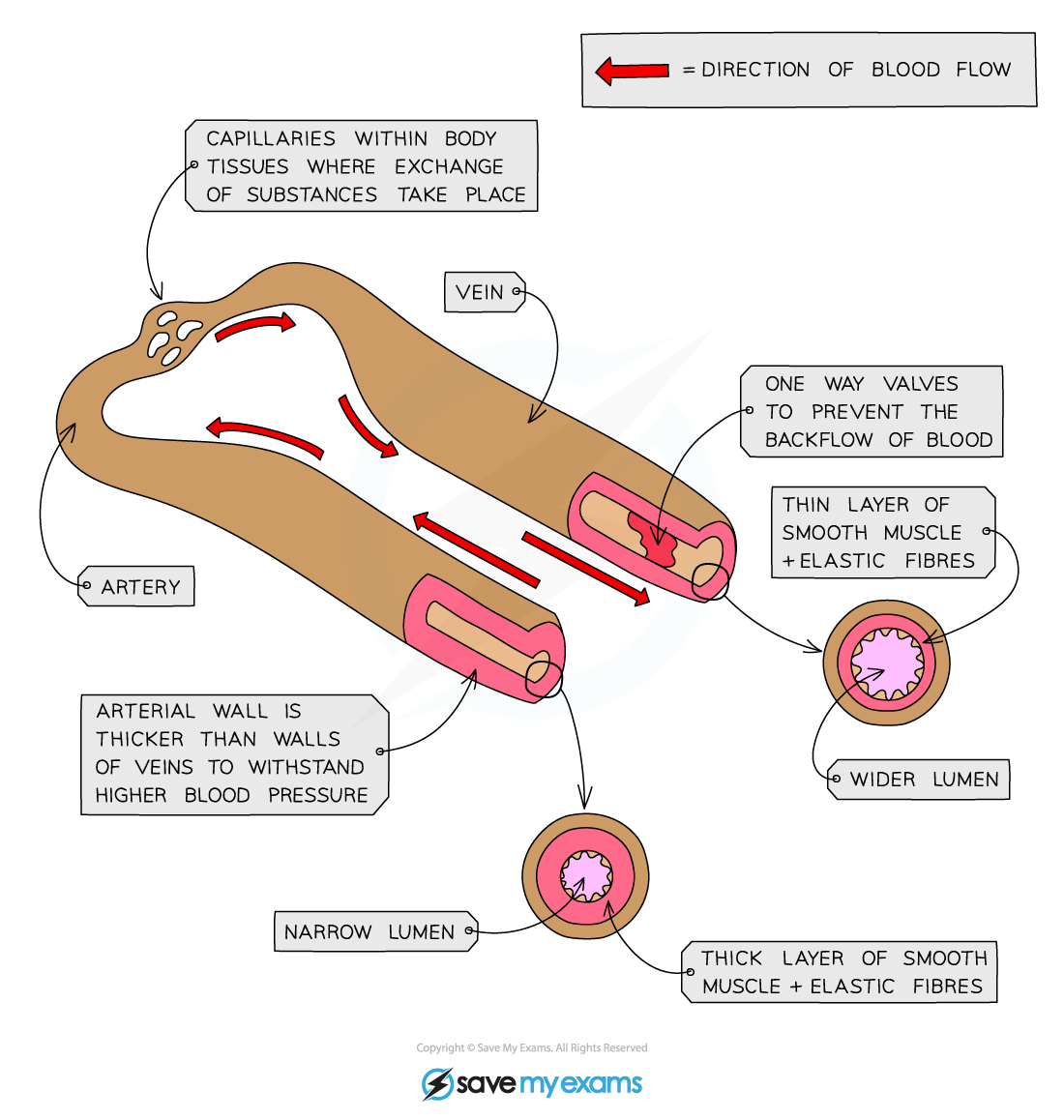
Comparing the structure of arteries and veins
Capillaries
- Key features:
- Carry blood at low pressure within tissues
- Carry both oxygenated and deoxygenated blood
- Have walls that are one cell thick
- Have ‘leaky’ walls
- Speed of blood flow is slow
- The structure of a capillary is adapted to its function in the following ways:
- Capillaries have walls that are one cell thick (short diffusion distance) so substances can easily diffuse in and out of them
- The ‘leaky’ walls allow blood plasma to leak out and form tissue fluid surrounding cells
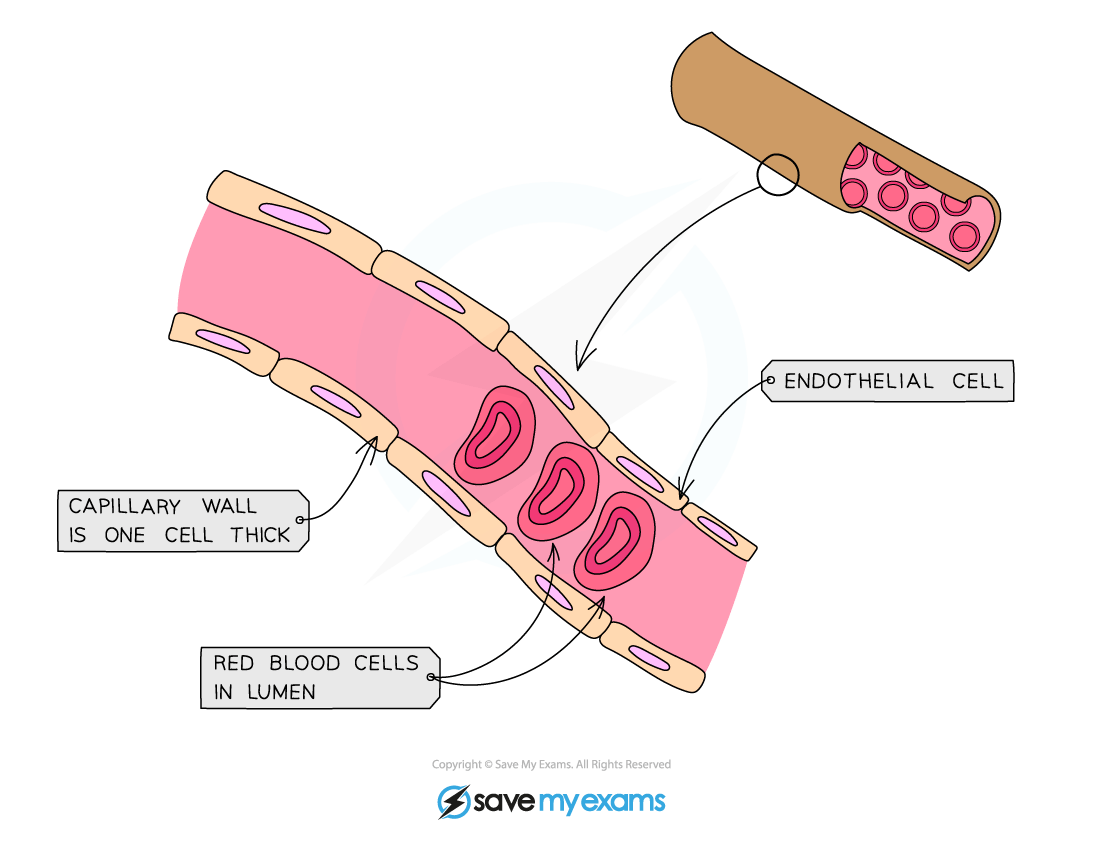
Structure of a capillary
Arterioles and venules
- As arteries get further away from the heart, they divide more and get narrower
- The narrow vessels that connect arteries to capillaries are called arterioles
- Veins also get narrower the further away they are from the heart
- The narrow vessels that connect capillaries to veins are called venules
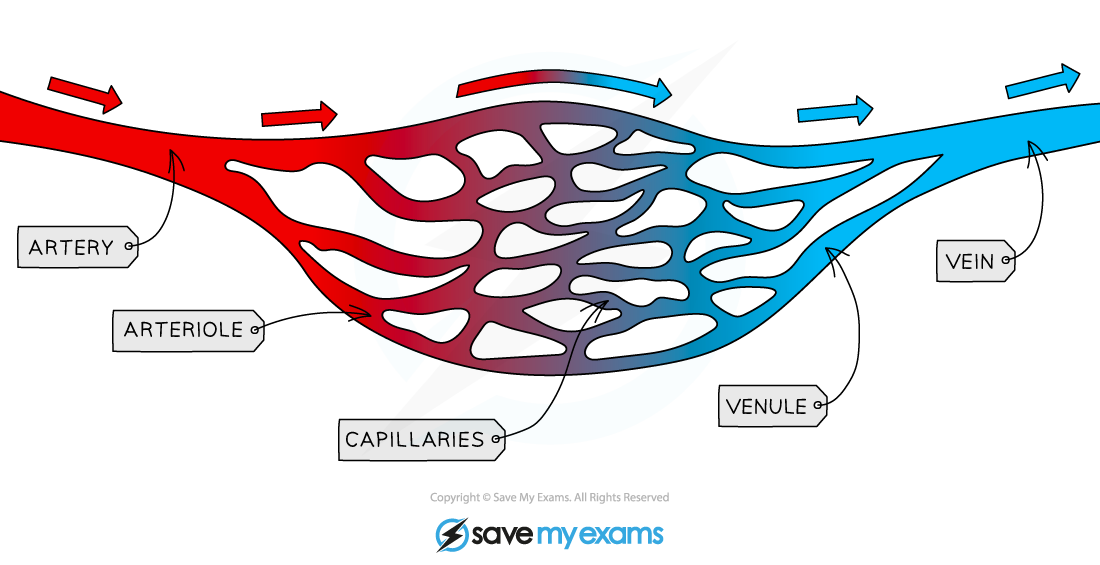
The blood vessel network
Circulatory System
- The circulatory system consists of a closed network of blood vessels connected to the heart
- Oxygenated blood is carried away from the heart and towards organs in arteries
- These narrow to arterioles and then capillaries as they pass through the organ
- In the organs, respiring cells use up the oxygen from the blood
- The capillaries widen to venules and finally veins as they move away from the organs
- Veins carry deoxygenated blood back towards the heart
- A different network of lymphatic vessels collect all the excess tissue fluid that leaks out of the capillaries and delivers it back to the circulatory system
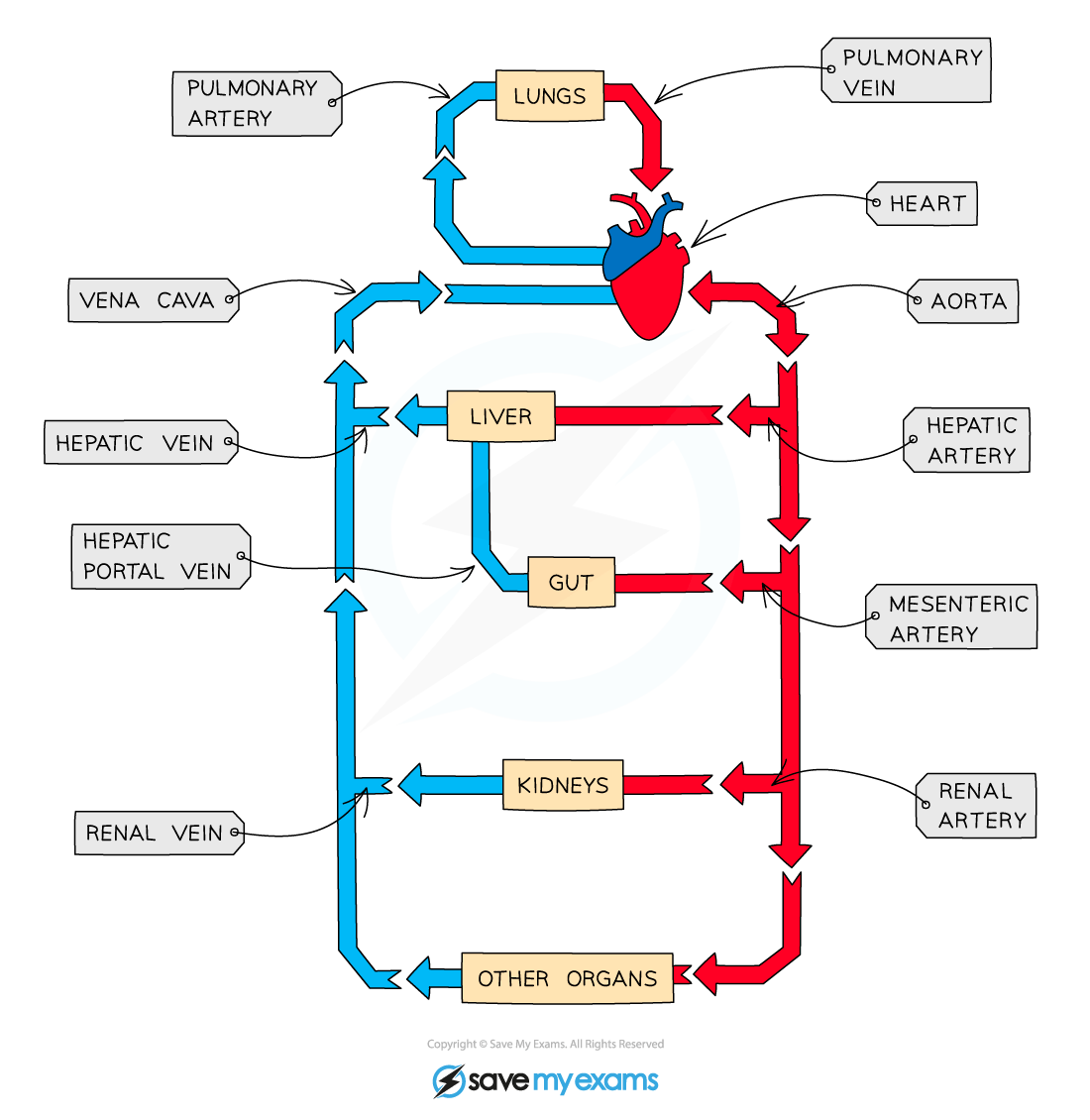
The circulatory system
Main Blood Vessels of the Circulatory System Table
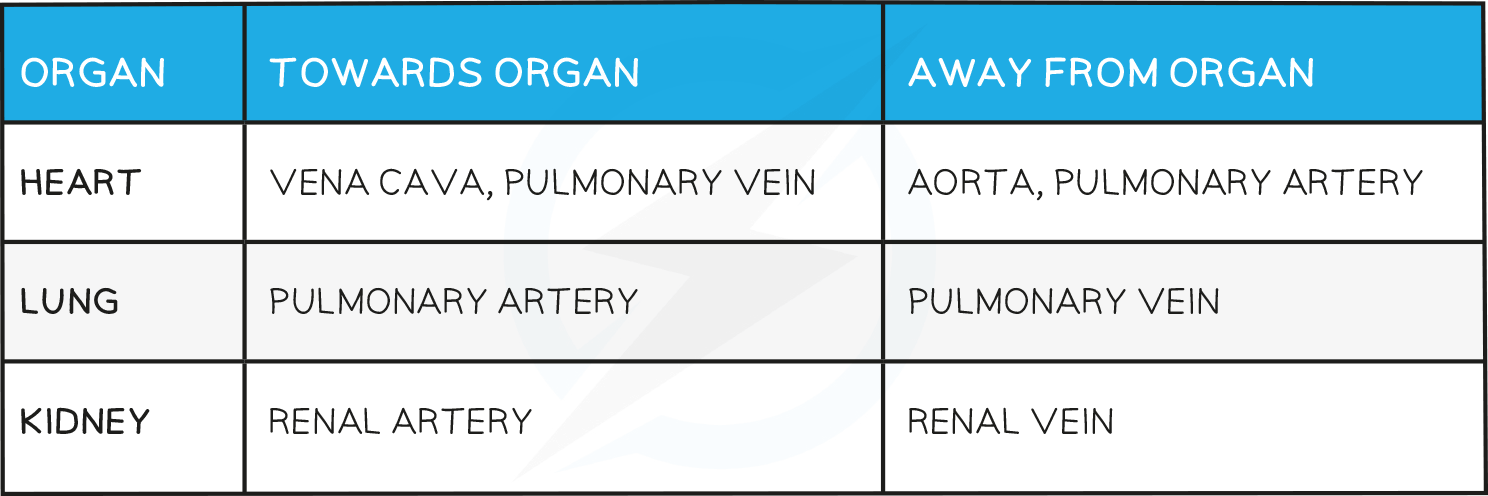
转载自savemyexams

最新发布
© 2025. All Rights Reserved. 沪ICP备2023009024号-1









